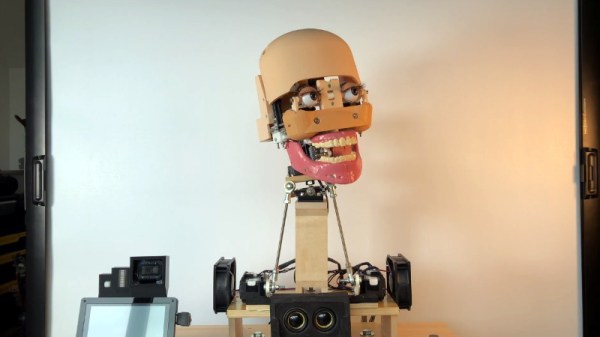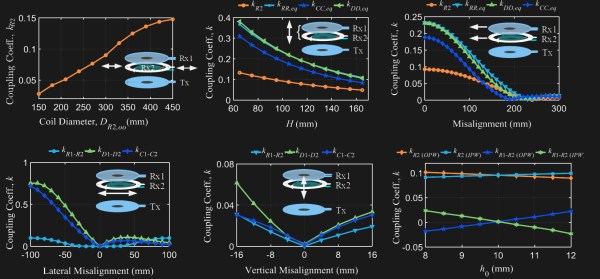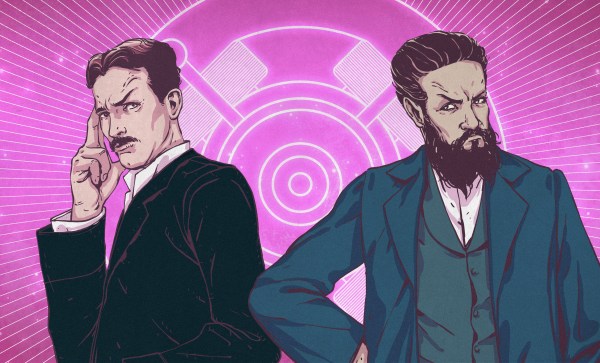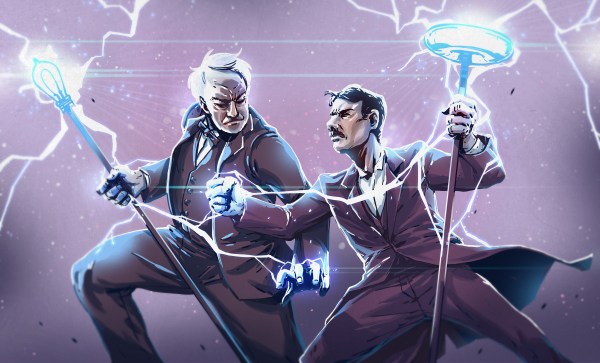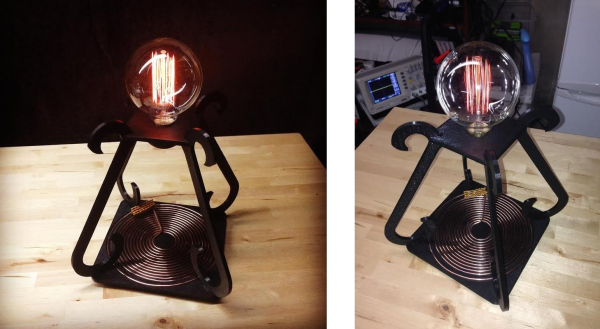While the Hackaday reader likely knows all about Nikola Tesla and his incredible body of work, the same can’t necessarily be said for the average passerby. Even a child can be counted on to know the names of Thomas Edison and Alexander Graham Bell, but as [Daniel Springwald] laments, the name Tesla is more often associated with the line of sleek electric cars than the brilliant Serbian inventor they were named for.
Hoping to level the playing field a bit, [Daniel] has come up with a way for the great man to plead his case. This custom designed robotic facsimile of the alternating current aficionado is able to speak about Tesla’s life and accomplishments in an interactive, if rather creepy, format.
There isn’t a lot of technical detail on this one yet, but what we can glean from the image gallery and video below is that there are an incredible number of OpenSCAD-designed 3D printed parts knocking around inside Mr. Tesla’s head. Add into the mix a healthy dose of springs, linkages, and servos, and you’re just a mustache short of a museum exhibit.
Most of the animatronic projects we’ve covered in the past have been based on animals, so it’s certainly interesting to see what goes into approximating human mannerisms mechanically. We’re not sure if this talking Tesla head will help educate the masses, but it’s certainly an impressive technical achievement.
Continue reading “Animatronic Nikola Tesla Sets The Record Straight”

